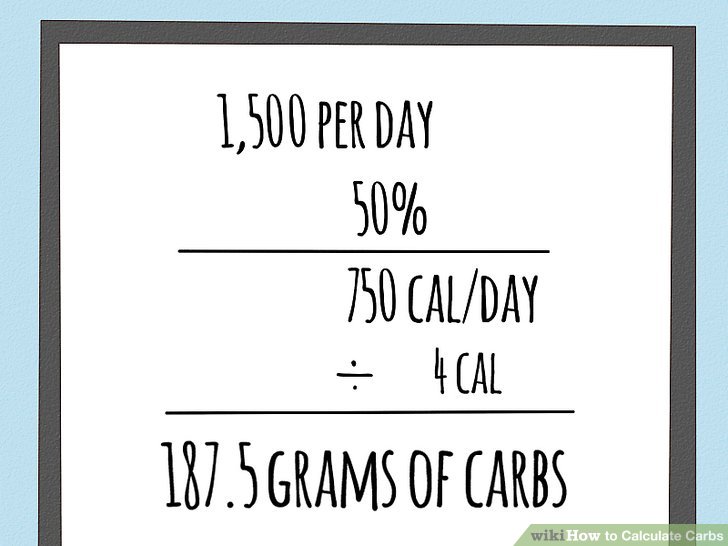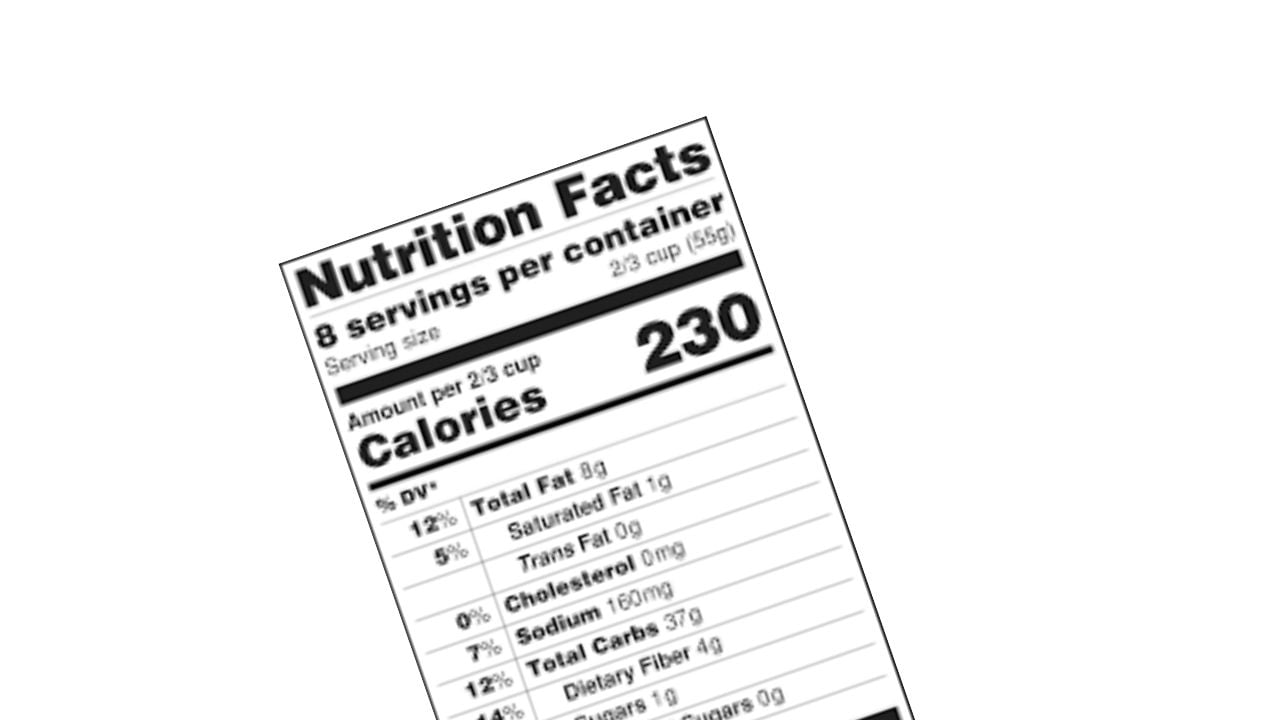Understanding how to calculate daily carbs is essential for managing your health and achieving specific wellness goals. Proper carbohydrate intake influences energy levels, body functions, and overall well-being, making it a vital aspect of personalized nutrition planning. Whether you aim for weight management, athletic performance, or general health, knowing how to accurately assess your carbohydrate needs can empower you to make informed dietary choices.
This guide explores various methods and tools to determine your ideal daily carbohydrate intake, highlighting practical procedures, useful digital resources, and real-life examples to support effective tracking and adjustment based on individual needs and lifestyle factors.
Understanding Daily Carbohydrate Intake

Accurately assessing daily carbohydrate intake is a fundamental aspect of effective health management. Carbohydrates serve as the body’s primary source of energy, supporting vital functions and physical activity. Understanding how to determine the appropriate amount of carbohydrates for individual needs enables better nutritional choices, aids in weight management, and supports specific health objectives such as blood sugar regulation or athletic performance.
The importance of calculating daily carbohydrate consumption lies in its impact on overall health and well-being. An imbalance — whether too high or too low — can lead to issues such as energy fluctuations, metabolic disturbances, or nutritional deficiencies. Therefore, a tailored approach based on personal factors ensures optimal health outcomes, making carbohydrate counting a valuable skill for maintaining balance and achieving health goals.
Factors Influencing Daily Carbohydrate Needs
Several key factors determine the ideal daily carbohydrate intake for each individual. Recognizing these variables allows for a personalized nutritional plan that aligns with specific health requirements and lifestyle choices.
- Age: As individuals age, metabolic rates tend to decrease, and nutritional needs evolve. Young children and teenagers require sufficient carbs for growth and development, whereas older adults may need to adjust their intake to support energy levels without excess calories.
- Gender: Men and women often have different energy requirements due to variations in body composition and hormonal influences. Generally, men may require higher carbohydrate intakes to support muscle mass and activity levels, while women’s needs can vary based on hormonal cycles and pregnancy status.
- Activity Level: Active individuals, especially those engaged in endurance sports or vigorous workouts, have higher caloric and carbohydrate needs to replenish glycogen stores and sustain performance. Sedentary lifestyles typically require fewer carbs, emphasizing balanced intake to prevent excess weight gain.
- Health Goals: Personal health goals, such as weight loss, muscle building, or managing conditions like diabetes, significantly influence carbohydrate requirements. For instance, individuals aiming for weight loss might adopt a lower-carb approach, whereas athletes may prioritize higher carbohydrate consumption for optimal performance.
Understanding these factors helps create a comprehensive dietary plan tailored to each person’s unique needs, ensuring they receive adequate energy while maintaining overall health. Incorporating knowledge of how age, gender, activity level, and health objectives influence carbohydrate requirements empowers individuals to make informed nutritional choices that support their lifestyle and wellness goals.
Methods to Calculate Daily Carbohydrate Needs

Determining the appropriate daily carbohydrate intake is essential for maintaining optimal health, supporting physical activity, and managing specific health conditions. Multiple methods exist to estimate individual carbohydrate requirements, allowing for personalized dietary planning based on lifestyle, metabolic rate, and health goals. Understanding these approaches enables better tailoring of carbohydrate consumption to meet individual needs effectively.
Each method employs different principles—ranging from simple rules of thumb to more detailed calculations based on body weight, activity level, or medical conditions. Selecting an appropriate method depends on the individual’s health status, dietary preferences, and specific objectives, whether for weight management, athletic performance, or medical management of conditions like diabetes.
Estimation Based on Body Weight and Activity Level
This straightforward method calculates daily carbohydrate needs by considering body weight and physical activity level, providing a practical starting point for most individuals.
- Determine your body weight in kilograms. To convert pounds to kilograms, divide the weight by 2.2046.
- Identify your activity level (sedentary, moderate, or active).
- Use the following guidelines for carbohydrate intake per kilogram of body weight:
Sedentary: 3-5 g/kg
Moderate activity: 5-7 g/kg
High activity: 6-10 g/kg
Multiply your body weight in kilograms by the appropriate value based on your activity level to estimate your daily carbohydrate needs.
Example: A person weighing 70 kg with moderate activity levels would require approximately 70 kg x 6 g = 420 grams of carbohydrates per day.
Caloric Intake and Macronutrient Distribution Method
This method involves calculating total daily caloric needs and then determining the carbohydrate portion based on recommended dietary guidelines or personal goals.
- Calculate your Total Daily Energy Expenditure (TDEE) using basal metabolic rate (BMR) formulas, such as the Mifflin-St Jeor equation, adjusted for activity level.
- Decide on the percentage of total calories to be derived from carbohydrates. The Dietary Guidelines typically recommend 45-65% of total daily calories from carbs.
- Convert the percentage into grams of carbohydrates, considering that each gram provides approximately 4 kcal.
Carbohydrate grams = (Total daily calories x desired percentage) / 4
Example: For a 2000 kcal diet aiming for 50% carbs: (2000 x 0.50) / 4 = 250 grams of carbohydrates daily.
Guidelines-Based Calculation for Special Conditions
Adjustments to carbohydrate intake are essential for individuals with specific health conditions or dietary plans. These modifications are based on established guidelines or medical advice to optimize health outcomes.
- For individuals with diabetes, carbohydrate intake may need to be more precisely regulated, often around 45-60 grams per meal depending on insulin therapy and blood glucose targets.
- In ketogenic diets, carbohydrate intake is typically restricted to less than 50 grams per day to induce ketosis.
- For athletes or highly active individuals, carbohydrate needs can increase considerably, sometimes exceeding 10 g/kg body weight, to replenish glycogen stores and support recovery.
It is vital to consult healthcare providers or registered dietitians when adjusting carbohydrate intake for health conditions, ensuring nutritional adequacy and safety.
Common Formulas and Guidelines for Daily Carbohydrate Intake
| Method | Description | |
|---|---|---|
| Body Weight & Activity Level | Calculates carbs based on weight and activity level | 3-10 g/kg body weight |
| Caloric & Macronutrient Distribution | Based on percentage of total calories | Carbohydrates = (Total Calories x % carbs) / 4 |
| Medical & Dietary Guidelines | Adjustments for health conditions | varies; e.g., <50g/day for ketosis, 45-60g/meal for diabetes |
Tools and Resources for Carbohydrate Calculation

Accurately tracking carbohydrate intake is essential for managing dietary goals, especially for individuals with specific health conditions or those aiming for balanced nutrition. Fortunately, a variety of digital tools, apps, and resources are available to simplify this process, making it easier to monitor and adjust carbohydrate consumption effectively. Utilizing these resources enhances precision and saves time, empowering users to make informed dietary choices consistently.
Effective use of these tools involves understanding how to interpret food labels, access reliable nutritional databases, and select the most suitable tracking methods tailored to individual needs. Combining technological solutions with traditional resources ensures a comprehensive approach to carbohydrate management, fostering better health outcomes and more sustainable dietary habits.
Digital Tools, Apps, and Online Calculators
In the digital age, numerous applications and online platforms have been developed to assist users in tracking carbohydrate intake efficiently. These tools often feature extensive food databases, barcode scanners, and personalized tracking options that help users log their meals with ease and accuracy.
- MyFitnessPal: One of the most popular calorie and macro tracking apps, it offers a vast database of foods, including many brand-name products. Its barcode scanning feature allows quick entry of packaged foods, and it provides detailed nutrient breakdowns, including carbs.
- Carb Manager: Specifically designed for low-carb and ketogenic diets, this app helps users count net carbs, track food intake, and monitor progress with user-friendly charts and meal planning tools.
- ChronoDiet: This app emphasizes timing and portion control, providing tailored carbohydrate guidelines based on personal health data and dietary goals.
- Online Carbohydrate Calculators: Websites like the USDA FoodData Central or Nutritional Data provide free access to extensive food composition data, enabling users to manually calculate carbohydrate content by searching specific food items.
To maximize the benefits of these tools, users should familiarize themselves with their features, inputting foods accurately and regularly updating their logs. Many apps allow synchronization with wearable devices or health apps, fostering a comprehensive view of dietary and physical activity data.
Using Food Labels and Nutritional Databases
Food labels serve as vital resources for determining carbohydrate content in packaged foods. Proper interpretation ensures accurate tracking and supports dietary adherence, especially when consuming processed foods or snacks.
Key steps include examining the Nutrition Facts panel, focusing on the total carbohydrate section, which encompasses sugars, starches, and fiber. Deducting fiber from total carbs yields net carbohydrates, a common metric in low-carb diets.
Net Carbohydrates = Total Carbohydrates – Dietary Fiber
In addition to food labels, nutritional databases such as the USDA FoodData Central, Nutritionix, and FatSecret offer comprehensive data on a wide variety of foods, including fresh produce, restaurant meals, and packaged products. These resources are invaluable for estimating carbohydrate content when labels are unavailable, especially in home cooking or dining out scenarios.
When utilizing these databases, users should verify the portion size and ensure consistency in measurement units to maintain accuracy. Combining label reading skills with database searches provides a robust method for precise carbohydrate calculation and dietary planning.
Comparison of Popular Carbohydrate Tracking Methods
Choosing the right carbohydrate tracking method depends on individual preferences, dietary goals, and lifestyle. The following table compares common methods based on key features:
| Method | Ease of Use | Accuracy | Cost | Ideal For |
|---|---|---|---|---|
| Mobile Apps (e.g., MyFitnessPal, Carb Manager) | High – user-friendly interfaces with barcode scanning and quick logging | High – based on extensive food databases and real-time updates | Freemium (free with optional premium features) | Individuals seeking convenience, consistency, and detailed tracking |
| Food Labels and Nutritional Databases | Moderate – requires manual interpretation and data entry | High – accurate when labels are read correctly and databases are used properly | Free | Those comfortable with manual calculations or without smartphone access |
| Paper Journals and Hand Calculations | Low – time-consuming and prone to errors | Moderate – depends on user accuracy | Low – minimal cost (notebook, pen) | Individuals preferring traditional methods or minimizing technology use |
Evaluating these options allows users to select methods aligned with their lifestyle, ensuring consistent and accurate carbohydrate management tailored to their health objectives.
Practical Procedures for Tracking Daily Carbohydrates

Monitoring daily carbohydrate intake is an essential step in managing dietary goals, whether for weight management, diabetes control, or overall nutritional balance. Implementing structured tracking procedures allows for better awareness of consumption patterns and facilitates adjustments aligned with activity levels and health objectives.
Effective carbohydrate tracking involves systematic recording of food intake, utilizing simple tools such as tables or bullet points to organize information. This process enables individuals to quantify their carbohydrate consumption accurately, identify areas for improvement, and make informed dietary decisions. Additionally, understanding how to modify intake based on daily variations in activity or dietary needs enhances the effectiveness of carbohydrate management strategies.
Recording Daily Food Intake Using Tables or Bullet Points
Consistent documentation of food consumption is fundamental to effective carbohydrate tracking. Using tables or bullet points helps organize information clearly and efficiently, making it easier to analyze intake over time.
- Choose a recording format: Select a simple table or bullet point list depending on personal preference and complexity of the diet plan.
- Include essential details: Record the food item, portion size, estimated carbohydrate content, and time of consumption for each entry.
- Maintain consistency: Track intake at regular intervals—preferably after each meal or snack—to ensure accuracy and completeness.
- Use reliable sources: Utilize nutrition labels, food composition databases, or pre-estimated carbohydrate counts to quantify each food item.
For example, a daily food log might look like this:
| Meal | Food Item | Portion Size | Approximate Carbohydrates (g) |
|---|---|---|---|
| Breakfast | Oatmeal | 1 cup cooked | 27 |
| Snack | Apple | 1 medium | 25 |
| Lunch | Grilled chicken salad with croutons | 1 plate | 15 |
| Dinner | Brown rice | 1 cup cooked | 45 |
Sample Meal Plan with Carbohydrate Counts
Creating a sample meal plan with approximate carbohydrate counts helps illustrate how to distribute carbohydrate intake throughout the day effectively. This example demonstrates how a balanced approach can meet dietary goals while maintaining variety and satisfaction.
Consider the following meal plan:
- Breakfast: Whole-grain toast (15g) with a boiled egg, and a small banana (23g) – Total: approximately 38g
- Mid-morning Snack: Greek yogurt with berries – Total: approximately 20g
- Lunch: Quinoa salad with mixed vegetables and chickpeas – Total: approximately 40g
- Afternoon Snack: Carrot sticks with hummus – Total: approximately 15g
- Dinner: Baked salmon, roasted sweet potatoes, and steamed broccoli – Total: approximately 35g
This sample totals around 150-160 grams of carbohydrates, aligning with general recommendations for many dietary plans, though individual needs may vary.
Adjusting Carbohydrate Intake Based on Activity Levels or Dietary Changes
Carbohydrate needs are dynamic and should be tailored according to daily physical activity and dietary modifications. Recognizing these variations allows for optimal energy levels and metabolic balance.
On days with higher physical activity, such as workout days or active workdays, increasing carbohydrate intake can replenish glycogen stores and support performance. Conversely, on rest days or periods of reduced activity, lowering carbohydrate consumption helps prevent excess caloric intake and supports metabolic health.
Adjustments should be made gradually, monitoring energy levels and blood sugar responses when applicable. For example, an athlete might increase carbohydrate intake by 20-30 grams on training days, while a sedentary individual may reduce intake slightly to match their lower energy expenditure.
In practice, this involves reviewing daily activity logs, noting changes in exercise intensity or duration, and modifying carbohydrate portions accordingly. Keeping a flexible food log where carbohydrate targets are adjusted in real-time ensures that dietary choices remain aligned with activity levels, leading to more effective and sustainable carbohydrate management.
Examples and Case Studies
Practical application of carbohydrate calculation techniques can significantly enhance understanding and effectiveness. By examining real-life scenarios and detailed weekly plans, individuals can better grasp how to tailor carbohydrate intake to their unique lifestyles, goals, and activity levels. These examples serve as valuable references for implementing consistent and informed carbohydrate management strategies in daily routines.
Through diverse case studies, we illustrate the process of calculating and adjusting carbohydrate intake, highlighting common challenges and effective solutions. Analyzing how different individuals—ranging from sedentary workers to athletes—approach carbohydrate planning underscores the adaptability and importance of personalized nutrition strategies.
Weekly Carbohydrate Calculations for Different Lifestyles
Understanding weekly carbohydrate plans helps individuals visualize their intake over time, enabling better consistency and goal achievement. Consider the following examples:
| Lifestyle/Goal | Sample Weekly Carbohydrate Target | Key Considerations |
|---|---|---|
| Sedentary Adult | 150-200 grams/day, approximately 1,050-1,400 grams/week | Focus on balanced intake to prevent excess; include fiber-rich carbs from vegetables and whole grains. |
| Active Individual (moderate exercise 3-4 days/week) | 200-250 grams/day, approximately 1,400-1,750 grams/week | Ensure carb intake supports energy needs without leading to surplus; distribute evenly across meals. |
| Athlete in Intensive Training | 300-400 grams/day, approximately 2,100-2,800 grams/week | Prioritize carbohydrate timing around training sessions; incorporate complex carbs for sustained energy. |
| Weight Loss Goal | Under 150 grams/day, approximately 1,050 grams/week | Monitor portion sizes; select high-fiber, low-glycemic carbs to maintain satiety. |
Sample Calculations for Specific Goals
Applying precise calculations to individual goals enhances the effectiveness of dietary planning. Here are some illustrative examples:
- Weight Loss Example: A 70kg person aiming to lose weight might target 120 grams of carbohydrates daily.
Calculation:
Total daily calories = 1,500
Protein (30%) = 450 kcal (112.5g)
Fats (40%) = 600 kcal (66.7g)
Remaining calories for carbs = 450 kcal
Carbohydrate grams = 450 / 4 = 112.5g - Athletic Performance Example: An endurance athlete training intensely 6 days a week might require approximately 350 grams of carbs daily to replenish glycogen stores.
Calculation:
Estimated energy expenditure per training day: 2,500 kcal
Carbohydrate needs (around 60-70% of intake): 350 g (1,400 kcal)
Remaining calories allocated to proteins and fats based on individual preferences and recovery needs.
Effective Carbohydrate Management Strategies
Summarizing successful approaches aids in maintaining consistency and achieving set goals:
- Consistently distribute carbohydrate intake evenly across meals to stabilize blood sugar levels.
- Prioritize complex, fiber-rich carbs such as whole grains, legumes, and vegetables to enhance satiety and nutrient intake.
- Adjust carbohydrate levels based on activity intensity and recovery requirements.
- Use portion control and food tracking tools to monitor daily intake accurately.
- Integrate carbohydrate timing around workouts to optimize energy levels and recovery.
- Remain flexible and periodically review intake plans to accommodate changes in activity levels or goals.
- Combine carbohydrate management with balanced macronutrient intake for overall nutritional adequacy.
Outcome Summary

In conclusion, mastering the calculation of your daily carbs can significantly enhance your nutritional strategy and health outcomes. By utilizing the right methods, tools, and practical adjustments, you can tailor your carbohydrate intake to fit your unique lifestyle and health goals. Staying informed and adaptable is key to maintaining a balanced and nourishing diet.